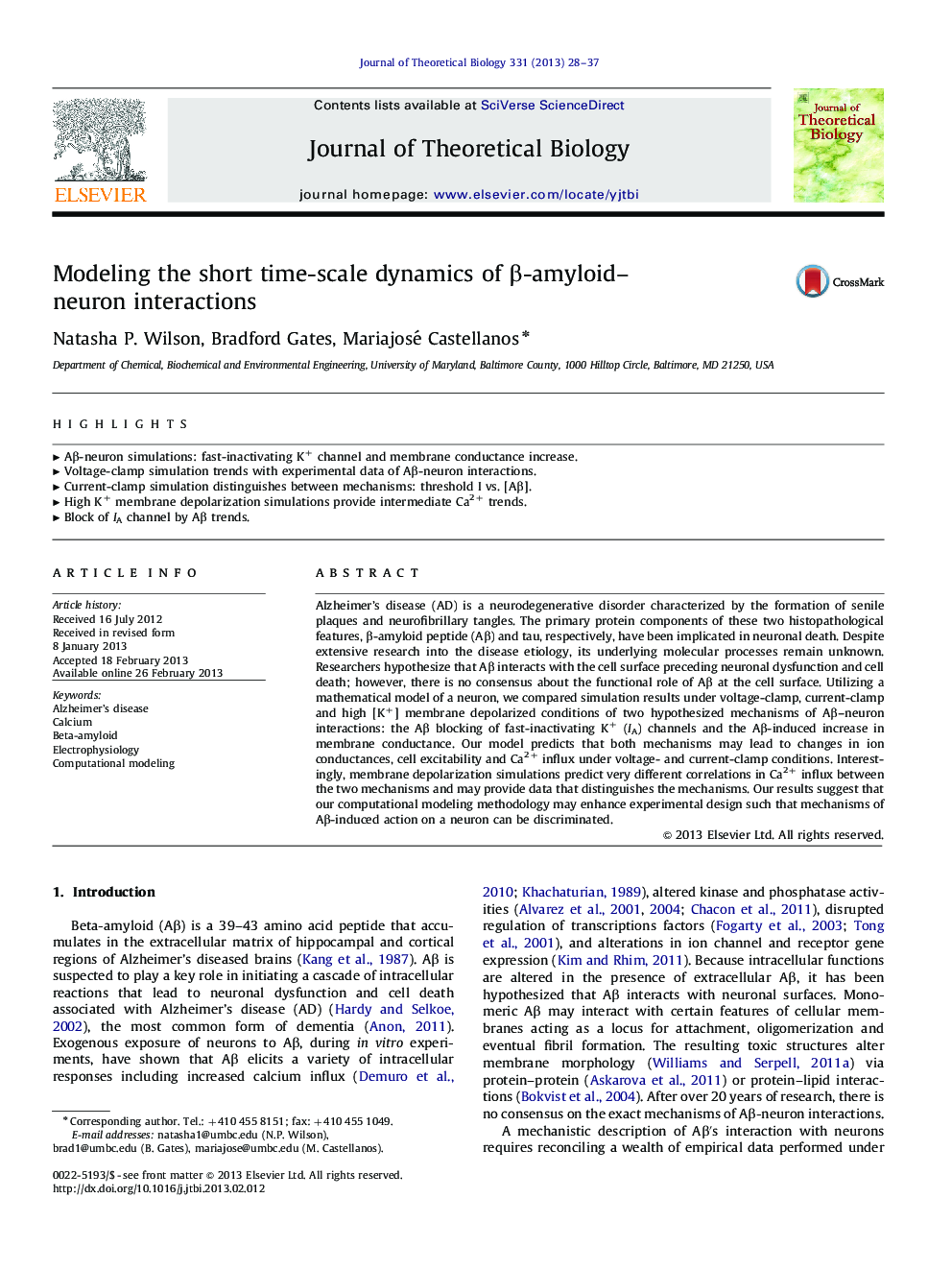| Article ID | Journal | Published Year | Pages | File Type |
|---|---|---|---|---|
| 6370788 | Journal of Theoretical Biology | 2013 | 10 Pages |
Alzheimer's disease (AD) is a neurodegenerative disorder characterized by the formation of senile plaques and neurofibrillary tangles. The primary protein components of these two histopathological features, β-amyloid peptide (Aβ) and tau, respectively, have been implicated in neuronal death. Despite extensive research into the disease etiology, its underlying molecular processes remain unknown. Researchers hypothesize that Aβ interacts with the cell surface preceding neuronal dysfunction and cell death; however, there is no consensus about the functional role of Aβ at the cell surface. Utilizing a mathematical model of a neuron, we compared simulation results under voltage-clamp, current-clamp and high [K+] membrane depolarized conditions of two hypothesized mechanisms of Aβ-neuron interactions: the Aβ blocking of fast-inactivating K+ (IA) channels and the Aβ-induced increase in membrane conductance. Our model predicts that both mechanisms may lead to changes in ion conductances, cell excitability and Ca2+ influx under voltage- and current-clamp conditions. Interestingly, membrane depolarization simulations predict very different correlations in Ca2+ influx between the two mechanisms and may provide data that distinguishes the mechanisms. Our results suggest that our computational modeling methodology may enhance experimental design such that mechanisms of Aβ-induced action on a neuron can be discriminated.
⺠Aβ-neuron simulations: fast-inactivating K+ channel and membrane conductance increase. ⺠Voltage-clamp simulation trends with experimental data of Aβ-neuron interactions. ⺠Current-clamp simulation distinguishes between mechanisms: threshold I vs. [Aβ]. ⺠High K+ membrane depolarization simulations provide intermediate Ca2+ trends. ⺠Block of IA channel by Aβ trends.
